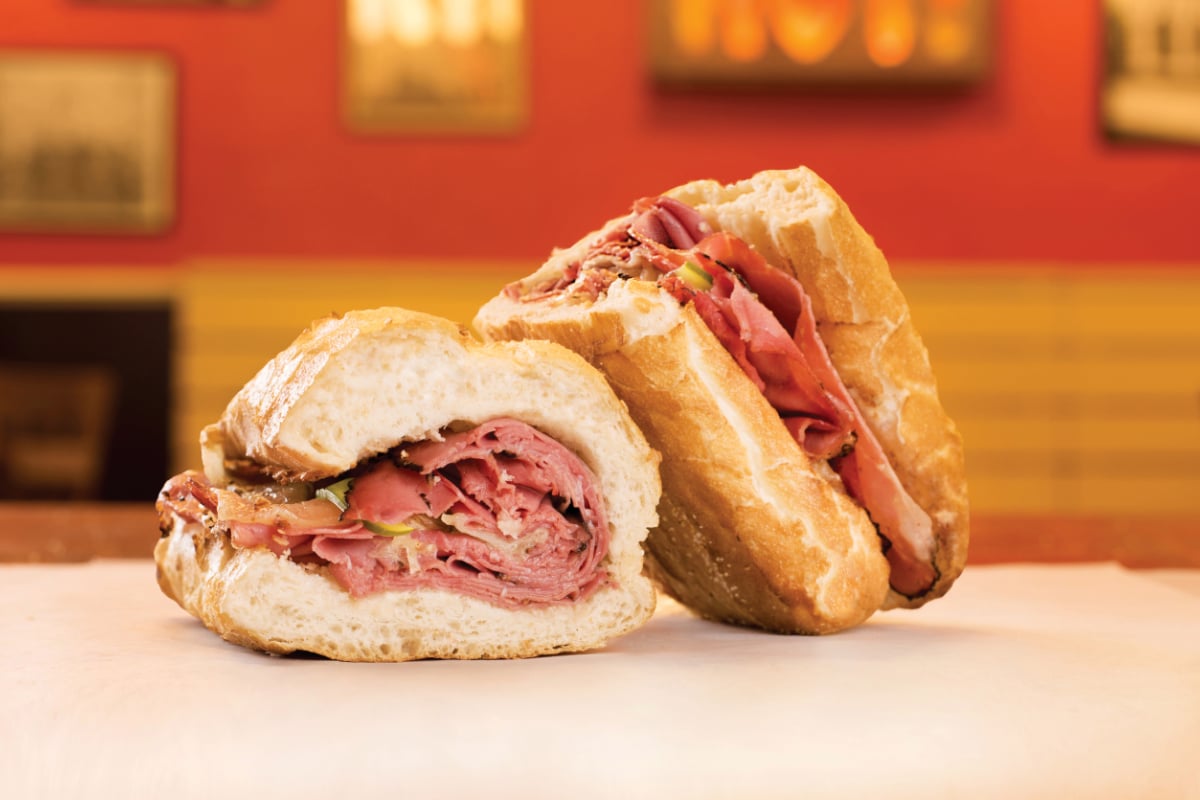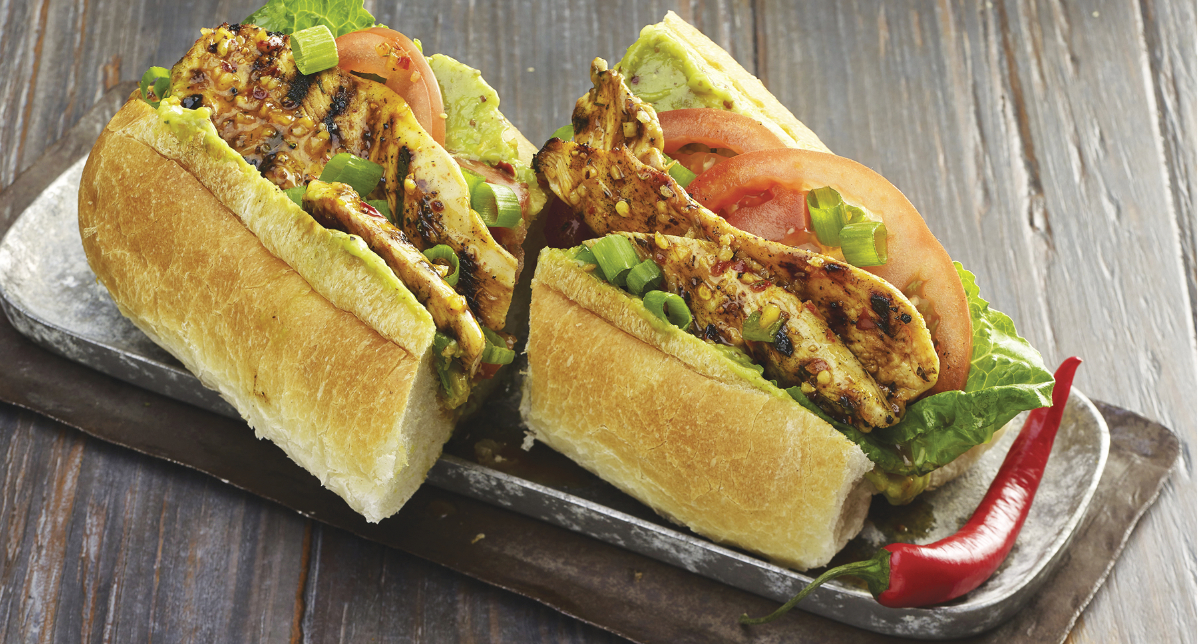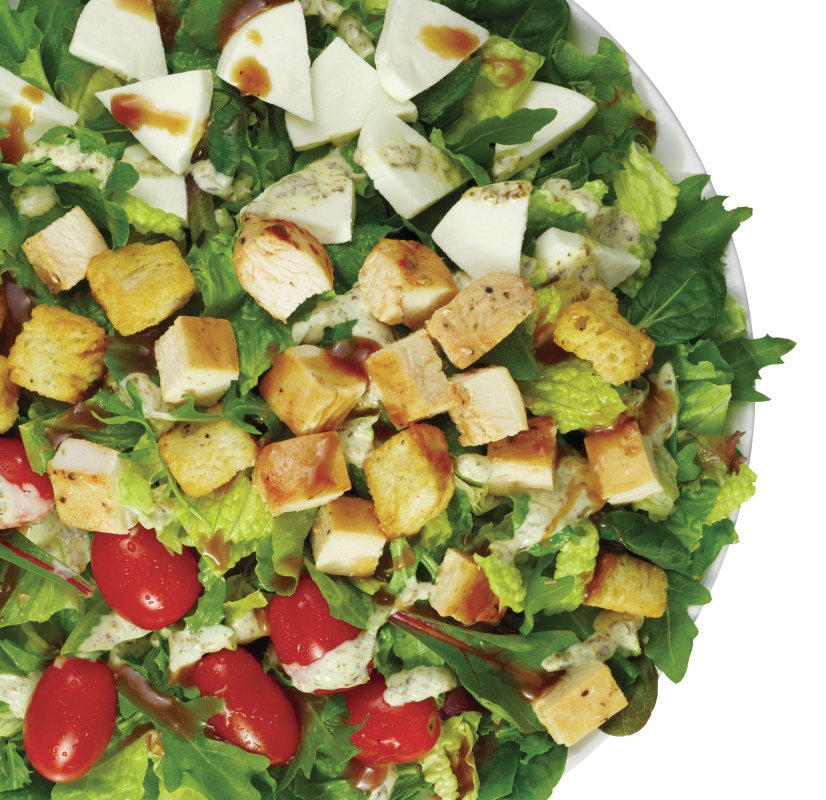CHICAGO — Colin, the chicken, featured on the first episode of “Portlandia” that aired more than seven years ago, epitomizes today’s consumers’ desire for local and fresh. In this satirical comedy, restaurant patrons demanded Colin’s paperwork to confirm their pending dinner had a proper upbringing prior to martyrdom.
Though an extreme dramatization, retailers cannot discount the fact that the mantra of today’s consumers is “the fresher, the better.” They are shopping store perimeters and seeking out minimally processed foods. Butcher counter services are booming and sliced-to-order deli meat sales continue to grow.
Raw and cooked meat and poultry, with the latter including ready-to-eat (R.-T.-E.) meats, sausages, hot bar foods and heat-and-eat products, however, are highly perishable. This is not only because of their biological composition, which includes active enzymes and oxidation-prone compounds, but also the omnipresence of aerobic psychrothropic strains of bacteria, many of which may be pathogenic.
Delivering farm-to-fork freshness to most growing urban populations requires technologies that manage these attributes. This includes the use of shelf-life extending ingredients, with the goal being to preserve the quality of meat and poultry while also ensuring safety.
Desirable color and flavor
To ensure visual integrity, processors often incorporate ingredients with antioxidant functionality. These ingredients slow oxidative changes that may take place in myoglobin, the protein in meat responsible for desirable red and pink color. When myoglobin oxidizes in fresh meat, it becomes discolored. This is not a food safety issue, yet consumers often associate off color with old product.
 Oxidation of fat content may also occur. Such fatty acid breakdown is more prevalent in cooked meats, as heat initiates the breakdown of polyunsaturated fatty acids (P.U.F.A.) present in such products. These fats are highly susceptible to oxidation, which produces unwanted flavor changes in the final product. This includes the production of warmed-over flavor (W.O.F.), which are odors and flavors commonly described as stale, cardboard-like, painty or rancid. W.O.F. has long been recognized as one of the primary causes of quality deterioration in cooked, refrigerated and pre-cooked frozen meat products.
Oxidation of fat content may also occur. Such fatty acid breakdown is more prevalent in cooked meats, as heat initiates the breakdown of polyunsaturated fatty acids (P.U.F.A.) present in such products. These fats are highly susceptible to oxidation, which produces unwanted flavor changes in the final product. This includes the production of warmed-over flavor (W.O.F.), which are odors and flavors commonly described as stale, cardboard-like, painty or rancid. W.O.F. has long been recognized as one of the primary causes of quality deterioration in cooked, refrigerated and pre-cooked frozen meat products.
The most common solution is the addition of antioxidants, which protect P.U.F.A. from oxidation by sacrificing themselves to the oxidation process. Artificial preservatives such as butylated hydroxyanisole (B.H.A.), butylated hydroxytoluene (B.H.T.) and tertiary butylhydroquinone (T.B.H.Q.) function as antioxidants and have long been the standard to ensure an economically sensible shelf-life for fully cooked and packaged meat products.
These ingredients are still widely used, but many processors are exploring the growing number of more label-friendly options, such as tocopherols, a class of vitamin E with powerful antioxidative properties. Tocopherols have long been used as a natural shelf-life extender in many products and have application in raw meat. Inclusion can be cleanly identified on ingredient statements as vitamin E or mixed tocopherols, usually with a parenthetical explanation of being added to maintain freshness, so as not to be confused with inclusion for fortification or nutrition profile enhancement.
There are also a number of plant-based extracts that function as antioxidants. Many are identified simply as “natural flavors” on ingredient statements. Rosemary and green tea extracts, for example, may assist with conserving the appearance, taste and quality of raw and cooked meat products, both refrigerated and frozen. Carefully selected plant breeds enable production of the most potent extracts. Suppliers blend the extracts into the most effective combination for a specific application and desired shelf life.
 At the molecular level, rosemary extract and green tea extract have similar functionality. Their active components exhibit chain-breaking antioxidant activity. The main difference is that green tea extract has a lower negative flavor contribution to the final product. Thus, using a lower level of rosemary extract in combination with green tea extract allows the manufacturer to increase the natural plant extract usage rate, often resulting in an extract blend that performs better than using rosemary alone.
At the molecular level, rosemary extract and green tea extract have similar functionality. Their active components exhibit chain-breaking antioxidant activity. The main difference is that green tea extract has a lower negative flavor contribution to the final product. Thus, using a lower level of rosemary extract in combination with green tea extract allows the manufacturer to increase the natural plant extract usage rate, often resulting in an extract blend that performs better than using rosemary alone.
There are fruit-based extracts that exert antioxidative function in meat and poultry. Acerola extract (cherry powder), for example, boasts high levels of antioxidant vitamin C. Select plum ingredients contain antioxidants along with concentrated levels of organic acids that have been shown to assist with reducing W.O.F.
Stopping microbial growth
In addition to retarding color and flavor changes, ingredient technologies are available to slow the growth of spoilage bacteria, as well as destroy pathogens.
“In order to prevent foodborne illness, meat and poultry production processes should incorporate different hurdles to reduce, eliminate or control the growth of pathogenic microorganisms,” said Greg Jahr, sales manager of meat industry for Niacet Corp. “Effective intervention technologies include the use of antimicrobials or preservatives.”
Organic acids are well recognized for their ability to control pathogen growth. Propionic acid is known to be the most effective; while vinegar, a natural source of acetic acid, is where a great deal of innovation is taking place. This is because vinegar is an ingredient consumers understand and don’t view as a chemical preservative; thus, it is viewed as a clean label ingredient.
 Niacet is a potassium-based powdered antimicrobial supplier. With dried ingredients, processors are not paying to ship water. Further, because the powders are highly concentrated sources of active ingredients, usage levels are often reduced to 0.5% batch weight. As free-flowing powders, these antimicrobials may be applied in various processing steps, including brines and in dry blends. All the ingredients are inert and will not react with other ingredients used in product formulations.
Niacet is a potassium-based powdered antimicrobial supplier. With dried ingredients, processors are not paying to ship water. Further, because the powders are highly concentrated sources of active ingredients, usage levels are often reduced to 0.5% batch weight. As free-flowing powders, these antimicrobials may be applied in various processing steps, including brines and in dry blends. All the ingredients are inert and will not react with other ingredients used in product formulations.
“Our ingredients – both traditional and clean-label options – also assist meat processors with reducing sodium content,” Mr. Jahr said. “We use potassium-based active ingredients rather than those that are sodium based. They contribute zero sodium to the finished product. They do this while maintaining efficacy throughout the extended shelf life.
“These ingredient technologies have proven to be effective against the typical pathogens that might be found in fresh and processed meats. Meat and poultry processors can expect excellent shelf life while providing a clean-tasting flavor. And, typically potassium on a label is viewed as more friendly by the consumer than sodium.”
One of the company’s specialties is its proprietary blend of potassium acetate and potassium diacetate. It was designed to preserve meat products with low-sodium content.
“The dosage level depends on local legislation, meat type and shelf life requirements,” Mr. Jahr said. “In the U.S., potassium acetate and potassium diacetate are considered GRAS and are approved in various meat and poultry products as a flavoring agent and as an antimicrobial agent. In the E.U., potassium acetate and potassium diacetate are both approved for meat applications under the same E number (E 261) so the ingredient system can be labeled with only one E number.”
In 2017, Niacet introduced a natural potassium dry vinegar powder for processors who prefer simpler ingredient statements. It may be labelled as “vinegar,” “neutralized vinegar” or “buffered vinegar.”
“The suggested dosage for optimal effect is 0.4% to 1.0%, based on the total meat formulation,” Mr. Jahr said.
 World Technology Ingredients (W.T.I.) Inc. offers a range of shelf-life extending ingredients, including liquids and powders, low-sodium or sodium-free options, clean label, natural, organic and non-G.M.O. ingredients. All products inhibit the growth of Listeria monocytogenes, as well as other pathogens and spoilage organisms, thereby increasing food safety and extending shelf life.
World Technology Ingredients (W.T.I.) Inc. offers a range of shelf-life extending ingredients, including liquids and powders, low-sodium or sodium-free options, clean label, natural, organic and non-G.M.O. ingredients. All products inhibit the growth of Listeria monocytogenes, as well as other pathogens and spoilage organisms, thereby increasing food safety and extending shelf life.
“Our ingredients can be added directly into a food product or used as a topical treatment,” said Klaus Kreuzner, director of sales at W.T.I. “Our products are designed to inhibit Listeria growth in R.-T.-E. products, but they also control a variety of spoilage organisms in cooked and raw items. We have conducted tests with our vinegars and in some cases, we were able to double shelf life in fresh meat and poultry items.
“We were the first to develop liquid vinegars as an alternative to conventional lactates/diacetates. And we introduced dry vinegar to the industry about six years ago. We are now rolling out a clean label, all-natural ingredient for fresh ground meat products. It extends shelf life and protects the natural quality attributes of ground beef, ground poultry and fresh sausage.”
Newly Weds Foods offers proprietary combinations of vinegar and spice extractives. The ingredients inhibit pathogen proliferation throughout product processing and distribution, reduce potential for cross-contamination and enhance Escherichia coli and Salmonella susceptibility to heat. The ingredients are sourced from nature, with organic and non-G.M.O. options available. The easy-to-use liquid is applied directly to ground products and to whole muscle meats by marination. It does not impact food flavor or overall product quality.
Corbion offers numerous products to control Listeria in R.-T.-E. meat and poultry products. The ingredient systems use combinations of lactate and acetate, or their clean label counterparts, ferments and vinegars. The ferments are made from sugars that are naturally fermented using specific food cultures to produce a range of different actives, such as organic acids, small peptides, residual sugars and other fermentation products.
Ensuring farm-to-fork freshness is possible through the use of ingredient technology.
“These ferments provide additional functionality such as yield enhancement, texture improvement and savory flavor in addition to combating pathogens and extending shelf life,” said Tom Rourke, director of business development for Corbion.
Corbion recently introduced organic vinegar products that utilize unique clean-label buffers and provide meat and poultry processors with non-G.M.O. and organic labeling options. There’s also a new line of natural powder products labeled as cultured sugar and vinegar.
“They are low in sodium and provide pathogen and shelf life protection as well as a specific product used for mold inhibition,” Mr. Rourke said.
The company now has a clean label antimicrobial that rivals potassium sorbate for mold inhibition, even in applications most vulnerable to mold, such as high-moisture meat snacks. The ingredient also provides pathogen protection.
Kemin Food Technologies offers a liquid, propionic acid-based antimicrobial designed to protect R.-T.-E. meat and poultry products from Listeria. It has been proven to extend product shelf life more consistently in comparison to traditional lactate-based products. Kemin was the first to commercialize such a product within the protein industry and was instrumental at getting propionic acid approved for use by the U.S. Department of Agriculture.
 “Since it is applied at a lower application rate, it contributes less sodium and lower cost-in-use than lactates and diacetates,” said Courtney Schwartz, senior marketing communications manager for Kemin. “We also offer a label-friendly vinegar-based product for food safety designed to protect meat and poultry products from foodborne pathogens and extend product shelf life by delaying the growth of spoilage bacteria.”
“Since it is applied at a lower application rate, it contributes less sodium and lower cost-in-use than lactates and diacetates,” said Courtney Schwartz, senior marketing communications manager for Kemin. “We also offer a label-friendly vinegar-based product for food safety designed to protect meat and poultry products from foodborne pathogens and extend product shelf life by delaying the growth of spoilage bacteria.”
Kemin’s buffered vinegar solutions have no negative effect on meat quality, including parameters such as water-holding capacity, protein denaturation, color or flavor. This line is available in both liquid, dry and no-sodium forms, making it easy to add to brines, marinades, spice blends or direct application to meat products. It is also available in a certified organic form.
For fresh ground meats and fresh poultry, Kalsec offers a unique combination of vinegar and rosemary. Inclusion may improve quality, thus extending shelf life, while also assisting with safety.
“Benefits include color and oxidative stability as well as a 2- to 3-log reduction in spoilage (psychrothropic as well as total plate counts) microbes,” said Poulson Joseph, principal scientist at Kalsec. “This ingredient combination has very low or no flavor impact and does not compromise texture.”
Wenda Ingredient offers all-natural, clean label pathogen protection ingredients made from fruit and spice extracts. The product line includes a true “uncured” ingredient solution free of celery powder and chemical nitrites.
“By eliminating concentrated nitrites for the purpose of pathogen protection, we are delivering on the promise of truthfulness and transparency for consumers that are buying uncured labeled meats,” said Chad Boeckman, director of marketing and national accounts for Wenda. “Our products are different in that we are using several hurdles for pathogen control, including polyphenol and flavonoid antioxidants as well as common pathogen protection ingredients for the carrier of these natural solutions, such as dried vinegar.”
Ensuring farm-to-fork freshness is possible through the use of ingredient technology. Extended shelf life helps reduce waste and ensure safety. It allows consumers to shop fresh and be confident about the quality of their purchases.




